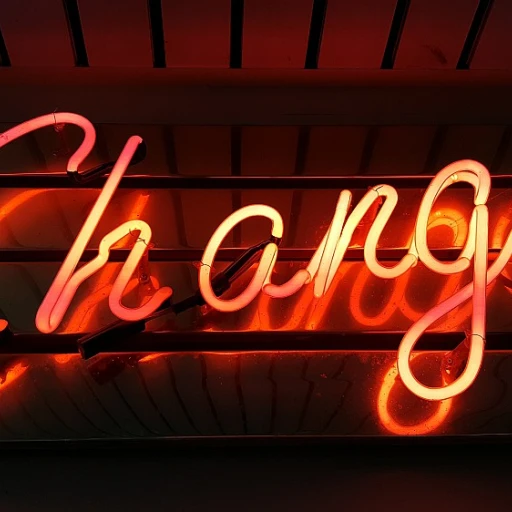Understanding predictive analytics in HR
What is predictive analytics in HR?
Predictive analytics is like the crystal ball of human resources. It leverages historical and current data to make predictions about employee behaviors, performance, and other crucial metrics. This isn't just crunching numbers; this involves the magic of machine learning algorithms and artificial intelligence to generate actionable insights.
Imagine predicting which of your employees might leave the company in the next six months or identifying potential leaders within your business before they even self-identify. That's the kind of power predictive analytics can bring.
The technological backbone
Packed with data driven insights, predictive analytics taps into real time data and cleans it up, makes sense of it, and turns it into meaningful predictions. The tech behind this includes machine learning algorithms that can detect patterns beyond what a pair of human eyes could achieve.
These algorithms process elements from job descriptions to performance reviews, turning complex human interactions into digestible data points. Natural language processing (NLP) is often at the core, helping these systems understand and interpret human languages.
For instance, IBM's Watson has been a game-changer in this field. It employs natural language processing to sift through mountains of unstructured data, offering rich insights that can help human resources professionals make better decision making.
Why it matters
The impact of predictive analytics on HR is profound. It's not just about having another shiny tool; it genuinely transforms how human resources teams operate. It allows HR professionals to shift from reactive to proactive strategies.
Predictive analytics helps in workforce planning, identifying future skill gaps, and optimizing talent management. According to a study by Deloitte, companies using advanced data analytics for HR decisions are 6% more likely to achieve positive business outcomes than their counterparts.
The role of data in predictive analytics
Why data is the new goldmine for hr
The role of data in predictive analytics is nothing short of revolutionary. In today's digital-first environment, human resources professionals are leaning heavily on data-driven insights to streamline processes, reduce costs, and increase employee engagement. According to a report by McKinsey & Company, companies utilizing data in their HR practices see a 20% improvement in employee performance.
The data-driven decision making
HR teams now leverage predictive analytics to make more informed decisions about hiring, promotions, and even layoffs. IBM’s HR department, for instance, employs advanced machine learning algorithms to actively predict which employees are most likely to leave the company. This proactive approach has reportedly reduced employee turnover by 25%. The Society for Human Resource Management (SHRM) emphasizes predictive analytics' value in improving workforce planning by anticipating staffing needs more accurately.
Boosting talent management and acquisition
One of the most remarkable benefits of predictive analytics in HR is talent management. SAP’s SuccessFactors uses predictive tools to identify high-potential employees for leadership roles, ensuring businesses can retain top talent. Furthermore, predictive analytics can enhance talent acquisition by analyzing data from various sources, such as job descriptions and candidate resumes, reducing the time-consuming tasks for recruiters while ensuring a better fit for the role.
Employee experience and performance
Companies are also using data-driven insights to improve the overall employee experience. Deloitte's 2018 Global Human Capital Trends report noted that organizations utilizing predictive analytics could enhance employee engagement and performance management. By evaluating metrics like employee mood and productivity data, HR professionals can identify areas for improvement, helping to boost morale and productivity. Katie Ledecky, an HR expert, states, “Data-driven strategies can transform human resources from a reactive function to a proactive one, driving significant business outcomes.”
Real-time workforce planning
Predictive analytics provides an opportunity for real-time workforce planning. For example, Amazon uses real-time data to manage its vast workforce efficiently. This form of predictive analytics allows for immediate adjustments to workforce management strategies, ensuring optimal productivity even during peak times.
Case study: ibm’s use of predictive analytics
Consider IBM's example. The tech giant has invested heavily in predictive analytics to streamline its HR functions. Using machine learning algorithms and natural language processing, IBM can detect employees who might be a flight risk and take preemptive action. This approach has not only reduced talent attrition but has also improved overall workforce morale.
How predictive analytics improves workforce planning
Optimizing workforce through predictive analytics
It's clear that predictive analytics aren't just floating around, they're changing how companies handle their employees. By crunching numbers, we can predict what's gonna happen. Let's jump into how firms use this tech to get the right people, in the right job, at the right time.
With predictive analytics, HR can dive deep into data to uncover patterns. For example, companies like IBM use predictive models to understand when employees might leave. According to McKinsey, businesses using predictive analytics have a 30% higher chance of identifying top talent compared to those that don't. No kidding—data-driven insights mean fewer surprises and more solid planning.
Spotting talent gaps before they happen
Think about how frustrating it is when you realize too late that you're short on talent. With predictive analytics, not only can we foresee gaps, but we can also craft effective training programs. Just imagine: instead of scrambling, you're always a step ahead.
Take a cue from Amazon. They predict the skills they'll need in the future, letting them gear up their workforce in advance. That's how they maintain their edge in such a competitive market. It's not magic—it's science!
Making better decisions, faster
Imagine not having to rely just on gut feeling. Predictive analytics arms HR leaders with concrete data. This helps in rolling out strategies based on facts, not just hunches. According to Gartner, companies using this tech see improved decision-making speed by 25%. That's like supercharging your HR department, right?
Performance reviews done right
Performance management can be a headache. But with predictive analytics, firms can pinpoint areas where employees need improvement. Not just any cliche feedback—but clear, actionable insights. Remember the days of vague comments? Kiss them goodbye.
HR pros at SAP found that predictive analytics significantly enhanced their performance review process, leading to a 20% boost in employee engagement. Employees got feedback they could actually use, making them feel valued and heard.
Predictive analytics isn't just a tool—it's a game-changer for workforce planning. It takes HR from reactive to proactive, from guesswork to precision. And remember, as the saying goes, 'An ounce of prevention is worth a pound of cure.'
Case studies: companies using predictive analytics in HR
Companies leveraging predictive analytics in hr
Predictive analytics is no longer a futuristic dream; numerous organizations have already integrated it within their HR practices. Let's look at some concrete examples.Google: forecasting staffing needs
Google isn’t just redefining search engines; it’s also at the forefront of HR innovation. Using predictive analytics, Google forecasts staffing needs based on historical hiring trends and current job market data. This proactive approach helps them stay ahead in recruiting top talent before the need becomes urgent.Unilever: enhancing employee retention
Unilever has successfully employed predictive analytics to predict employee turnover. By analyzing data points such as employee engagement surveys, performance reviews, and even commute times, they’ve drastically improved their employee retention rate. According to a study by McKinsey, companies using predictive analytics can see a retention improvement of up to 25%.Ibm: optimizing talent acquisition
IBM leverages machine learning algorithms to optimize its talent acquisition strategy. By analyzing data from past recruitment processes, they’ve improved the accuracy of identifying high-potential candidates. As a result, IBM has reported a 30% reduction in the time needed to fill positions.Amazon: streamlining workforce planning
Amazon uses predictive analytics to streamline its workforce planning and ensure operational efficiency. By examining warehouse data and employee performance metrics, they’ve optimized staffing levels and shift patterns, ensuring that the right number of employees are available at peak times. This has resulted in a significant boost in productivity.Sap: predicting performance outcomes
SAP has integrated predictive analytics within its HR suite to anticipate employee performance outcomes. By analyzing historical performance data and other factors, they can predict future high performers and create targeted development plans. According to Gartner, such analytics-driven approaches can improve employee performance by up to 15%.Case studies highlight diverse applications
These case studies illustrate the diverse applications of predictive analytics across different sectors. Whether it's forecasting staffing needs, enhancing employee retention, optimizing talent acquisition, streamlining workforce planning, or predicting performance outcomes, predictive analytics is redefining HR practices, making them more efficient and effective.Taking predictive analytics further
As seen from these examples, predictive analytics is an essential tool for modern HR operations. Organizations not only benefit from increased efficiency and reduced costs but also gain data-driven insights that help in making informed decisions, ultimately improving their workforce’s overall performance. Understanding the potential and implementing these strategies could be transformative for your HR department.Expert insights on predictive analytics in HR
Real-world examples of predictive analytics in HR
It's one thing to talk about how predictive analytics is changing the HR game; it's another to see it in action. Let's check out some companies that are successfully leveraging this technology to reshape their workforce planning and talent management strategies.
Amazon's approach to talent management
Amazon, one of the giants in the tech world, uses predictive analytics like a seasoned pro. The company employs machine learning algorithms to anticipate employee turnover and address it well before it becomes a problem. According to a study by IEEE, Amazon analyzed data like performance reviews, engagement scores, and employee feedback to predict which employees are at risk of leaving. They then took steps to engage these employees better, resulting in improved retention rates and better decision making overall.
Deloitte's data-driven insights
Deloitte is another powerhouse that uses data analyses to enhance workforce planning. According to a report by Deloitte, the company integrated predictive analytics into their HR system to anticipate future skill gaps. By examining employee data, performance metrics, and other KPIs, Deloitte could forecast where gaps might appear and start learning development programs to upskill their teams ahead of time.
IBM's predictive analytics for performance management
IBM has been a frontrunner in adopting AI for human resources, especially when it comes to performance management. According to a report by IBM, they utilize predictive analytics to analyze employee performance and identify strengths areas of improvement. By diving into various data points like project outcomes and peer feedback, IBM's HR professionals can provide targeted support to help employees excel in their roles.
Case study: The city of Colorado
The city of Colorado embarked on a journey to enhance their public sector workforce with predictive analytics. They focused on workforce planning, analyzing real-time data to predict future hiring needs and align them with the city's strategic goals. According to a Colorado workforce planning study, these efforts led to better resource allocation and reduced time-consuming administrative tasks for HR teams.
Challenges and ethical considerations
Navigating challenges in predictive analytics
Predictive analytics sounds like a miracle solution for workforce planning, but the road isn't always smooth. One key challenge revolves around data integrity and quality. A study by Gartner found that poor data quality costs companies an average of $15 million per year. When the information used in predictive models is inaccurate or incomplete, the predictions can be misleading.
Ethical concerns in workforce predictions
Implementing predictive analytics in HR isn't just about numbers; it raises a host of ethical issues too. This technology relies on AI and machine learning algorithms, which can inadvertently introduce bias if not properly monitored. Case in point, Amazon had to scrap an AI recruitment tool after discovering it was biased against women, favoring male candidates in its job recommendations.
Balancing transparency and privacy
Another sticking point is transparency. Employees might feel uncomfortable knowing their employer uses predictive analytics to evaluate their future performance or potential. It can create a culture of distrust if not handled transparently. According to a study by SHRM, 67% of employees expressed concerns about how their data would be used, signaling a need for HR to be upfront about the objectives and methods associated with predictive analytics.
Overcoming resistance to change
Resistance from within the organization is another hurdle. Human resources professionals often face pushback from employees and even leadership when rolling out new technologies. A survey by Deloitte illustrated this vividly, noting that 62% of HR leaders encountered resistance to new data-driven initiatives. Effective communication and training are essential to ease these transitions and foster an environment open to innovation.
Striking the perfect balance in data use
Striking the right balance in using data for employee management is a tricky tightrope walk. You've got to balance innovation with ethical considerations. Inappropriate use of data can lead to mistrust and legal ramifications, affecting both employee engagement and retention. Industry expert Josh Bersin stresses this balance: "Using predictive analytics responsibly means not just focusing on the 'what' and 'how,' but also on the 'why.'" Addressing the 'why' helps align predictive analytics with broader organizational and ethical standards.
Real-time data management complexities
Real-time data is a game-changer, but it's also tough to manage. Companies need robust infrastructure to capture this data efficiently and interpret it accurately. Without these capabilities, real-time data can cause more confusion than clarity. According to McKinsey, only 30% of companies feel confident in their real-time data handling capabilities. Thus, investing in the right tools and training is paramount.
Navigating the tightrope of employee privacy
Lastly, there's the matter of employee privacy. Using predictive analytics means scrutinizing vast amounts of data, which could infringe on personal boundaries. Privacy laws like GDPR in Europe and the CCPA in California necessitate strict adherence. HR departments must ensure compliance to avoid hefty fines and damage to reputation. Keeping data anonymized and securing explicit consent are fundamental to ethically implementing predictive analytics.
Best practices for implementing predictive analytics in HR
practical steps for hr teams
Implementing predictive analytics in HR isn't just about buying the latest tools. It's a holistic approach that integrates data, technology, and a forward-thinking mindset among human resources professionals. Here are the essential steps to get started.investment in training and development
To harness the full potential of predictive analytics, human resources teams must invest in upskilling their employees. This includes training on data literacy, machine learning algorithms, and real-time data analysis. Josh Bersin, a prominent HR analyst, emphasizes the importance of learning development: “Organizations that prioritize continuous learning are the ones most likely to retain top talent and see significant business growth.”start small and scale
Don't aim to overhaul the entire HR system overnight. Begin with a specific aspect such as performance management or talent acquisition. Companies like IBM and Deloitte have had success by initially focusing on a single department and gradually integrating AI and predictive analytics across the organization.use reliable data sources
The accuracy of predictive analytics heavily relies on the quality of data. SAP's Human Experience Management Suite is an excellent example that integrates various data-driven insights from employee performance reviews, talent management, and workforce planning to help HR make better decisions.ethical considerations
While implementing predictive analytics, HR must also address ethical issues. This includes ensuring data privacy, preventing bias in machine learning algorithms, and maintaining transparency. The SHRM recommends establishing a clear ethical framework when deploying AI technologies.continuous performance reviews and feedback
Companies like Amazon have adopted continuous performance review systems that use real-time data. This dynamic approach allows leaders to help drive employee engagement and development effectively.collaborate with it and data teams
Implementing AI in HR isn't solely an HR activity. It requires collaboration with IT and data science teams to ensure seamless integration and data-driven decisions. Katie Ledecky, a leading HR strategist, suggests, “By working closely with IT, HR teams can tailor AI solutions that align with overall business objectives.”integrating ai chatbots and virtual assistants
AI tools like chatbots and virtual assistants can take over time-consuming tasks such as answering employee queries or scheduling interviews, freeing HR professionals to focus on strategic initiatives. McKinsey reports that companies using AI-driven chatbots have seen a 30% reduction in HR administrative tasks. Implementing predictive analytics in HR can indeed transform the way organizations manage, develop, and retain talent. It's all about making informed, data-driven decisions that positively impact the employee experience and overall business performance.The future of predictive analytics in HR
Adoption trends and future applications
The future of predictive analytics in HR is all about scaling adoption across various businesses and refining its practical applications. Currently, about 70% of companies using HR predictive analytics report significant improvement in talent management processes, according to a study by Gartner. Josh Bersin, a recognized HR expert, suggests that this trend will only grow as companies continue to realize the benefits of leveraging data-driven insights for workforce planning.
Emergence of AI and machine learning in HR
Moving forward, the integration of AI and machine learning algorithms in human resources will be vital. These technologies greatly enhance predictive analytics capabilities, making processes like talent acquisition, performance reviews, and workforce planning more efficient. Experts predict that by 2025, AI in HR will be commonplace, with 61% of companies aiming to utilize AI for routine administrative tasks, based on IDC research. This will allow HR professionals to focus more on strategic decision-making and improving the overall employee experience.
Real-time data for better decision making
Another significant trend is the use of real-time data to drive better decision-making. With systems that can analyze an employee's performance data in real-time, leaders can make quicker, more informed decisions. This is already being tested in companies like Amazon and SAP, where predictive analytics tools provide actionable insights that can help managers identify strengths areas of improvement within their teams. The goal is to leverage these insights to retain top talent and enhance productivity.
Future innovations in HR predictive analytics
The upcoming innovations in this field promise even more exciting possibilities. The HR Daily Newsletter highlights that natural language processing (NLP) and generative AI could significantly impact how HR professionals interact with data. For instance, chatbots and virtual assistants powered by NLP are expected to handle initial candidate screenings and answer HR-related queries, freeing up HR teams for more complex tasks.
Ethical considerations and challenges ahead
While the future looks promising, it’s also important to consider the ethical challenges that accompany these advancements. Issues around data privacy, unbiased algorithms, and the potential for AI to unintentionally perpetuate existing biases in the workplace must be addressed. HR teams will need to collaborate closely with data scientists and IT professionals to establish stringent guidelines and best practices to mitigate these risks. According to a report by McKinsey, about 50% of HR professionals cite managing these ethical considerations as a significant challenge moving forward.
Best practices for future implementation
To successfully implement predictive analytics, companies need to follow best practices. This involves maintaining transparent communication with employees about how their data will be used and ensuring that the predictive analytics models are continuously monitored and refined for accuracy.
Additionally, investing in training and development is crucial. For example, Deloitte suggests that businesses that spend time upskilling their HR teams in data analytics see more meaningful results from their predictive analytics efforts. Such investments are essential for making sure the human element remains at the forefront of HR practices even as technology continues to evolve.












